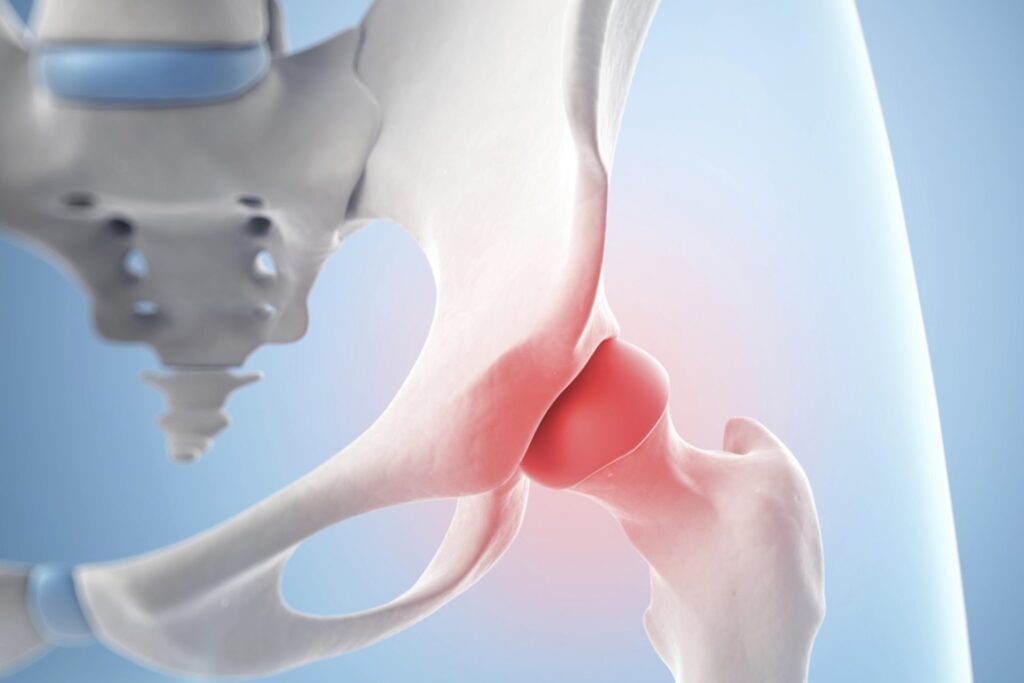
What Is Hip Dysplasia ?
Hip dysplasia is a condition that is seen more often in women and occurs when the acetabulum (the socket in the pelvis into which the femoral head fits) is too shallow to support the femoral head (the ball-shaped bone at the top of the femur or thigh bone)
Most people who experience hip dysplasia are born with this condition but many don’t experience symptoms until adulthood.
If left untreated, hip dysplasia can cause osteoarthritis and the need for a hip replacement.
Hip Dysplasia Symptoms
Signs of hip dysplasia can present in a variety of ways.
A person with hip dysplasia may experience:
- Pain in the groin that increases with activity
- Limping
- A catching, snapping or popping sensation
- Loss of range of motion in the hip
- Difficulty sleeping on the hip
Hip Dysplasia as the Cause of Other Hip Injuries
In many cases, hip dysplasia can be the cause of hip labral tears – particularly for women.
This is a common problem that can cause pain, stiffness, and locking or catching in the hip joint.
Specialists perform in-depth evaluations on all patients with labral tears to determine if the cause is an underlying condition, such as hip dysplasia.
When a labral tear is caused by hip dysplasia, our specialists treat both conditions to reduce the risk of reinjury and ensure optimal outcomes.
Diagnosing Hip Dysplasia
Specialists use advanced imaging tests, including MRI and 3-D CT scans, to accurately diagnose hip dysplasia.
We then develop a treatment plan to address your pain, correct the deformity, and preserve the structure and function of your hip joint for the long term.
How Can Hip Dysplasia Be Treated?
If non-surgical approaches fail to provide relief from symptoms of hip dysplasia, we will proceed with surgery using the following approaches:
- Periacetabular osteotomy (PAO)/Ganz osteotomy: This is an open surgery that allows us to reorient the hip socket to improve coverage of the femoral head by the socket. It is particularly effective for dysplastic (shallow) hips.
- Hip Dysplasia Recovery
Depending upon the cause of your hip dysplasia, you can expect to be on crutches for about two weeks following surgery.
At four weeks you can bear weight.
You’ll return to normal activities between two- and four-months following surgery.
Read Also
Emergency Live Even More…Live: Download The New Free App Of Your Newspaper For IOS And Android
MOP Hip Implant: What Is It And What Are The Advantages Of Metal On Polyethylene
Hip Pain: Causes, Symptoms, Diagnosis, Complications, And Treatment
Hip Osteoarthritis: What Is Coxarthrosis
Why It Comes And How To Relieve Hip Pain
Hip Arthritis In The Young: Cartilage Degeneration Of The Coxofemoral Joint
Visualizing Pain: Injuries From Whiplash Made Visible With New Scanning Approach
Coxalgia: What Is It And What Is The Surgery To Resolve Hip Pain?
Unicompartmental Prosthesis: The Answer To Gonarthrosis
Shoulder Instability And Dislocation: Symptoms And Treatment
How To Recognise Hip Dysplasia?
Hip Dysplasia: The First Ultrasound Scan After 40 Days Of Life
Snapping Hip Syndrome: What It Is And How To Treat It


